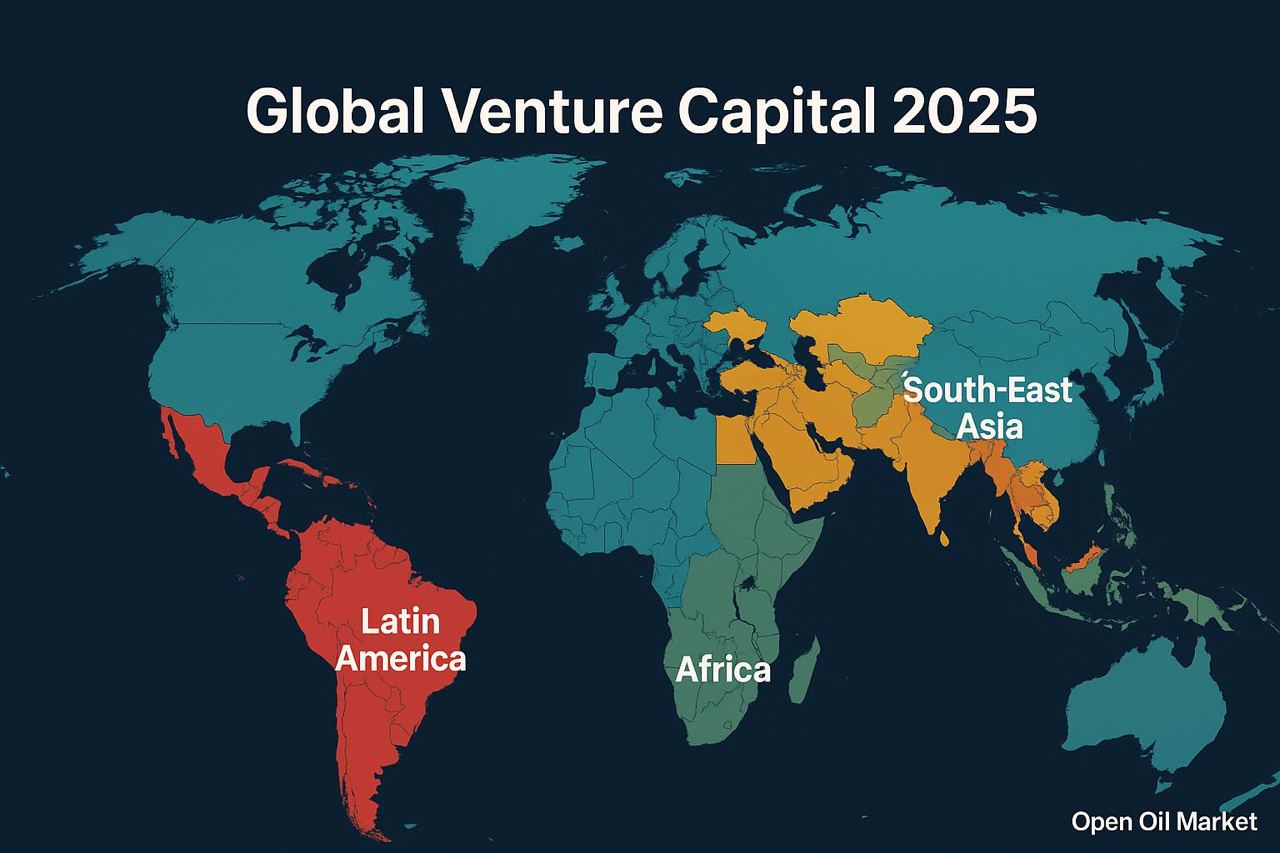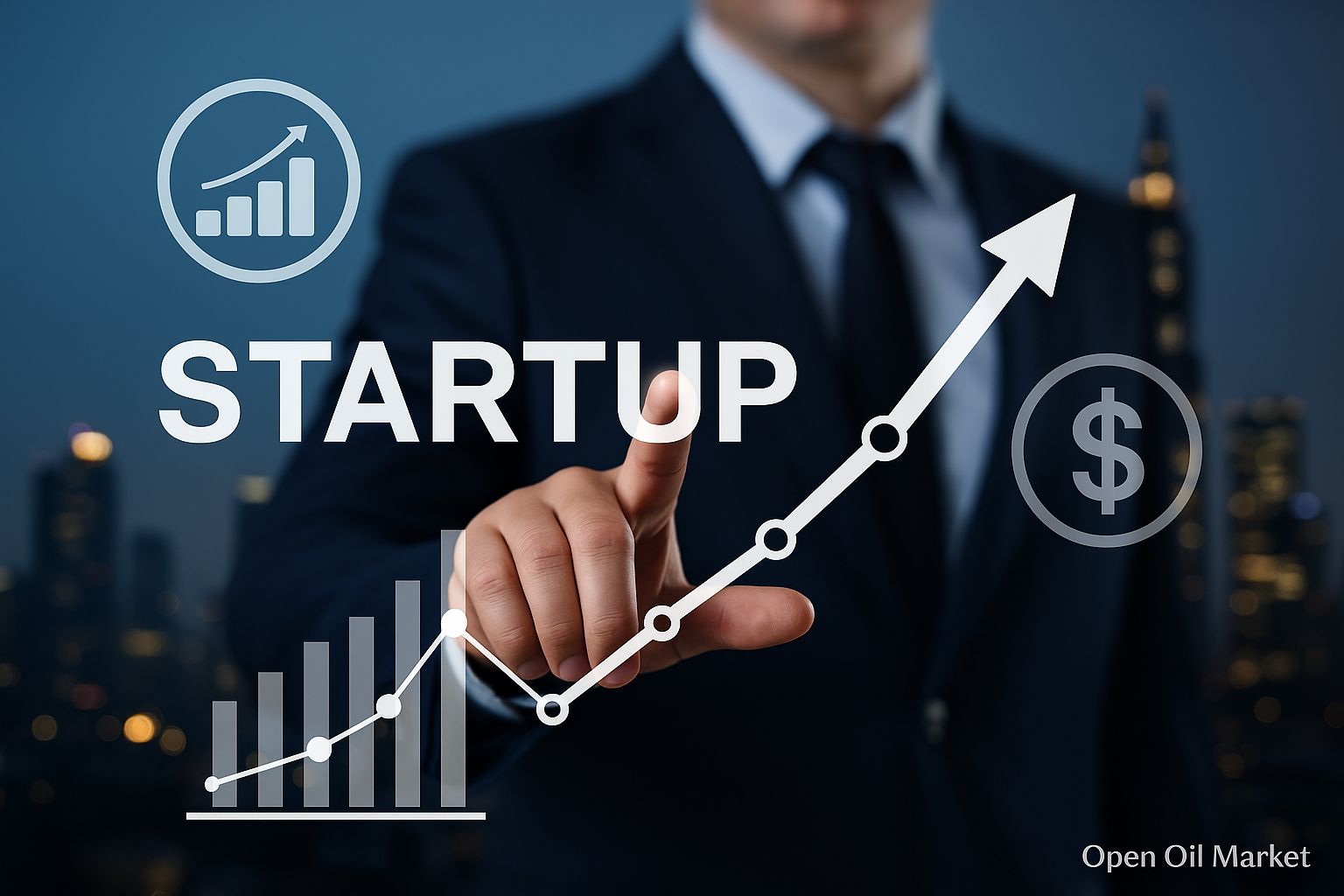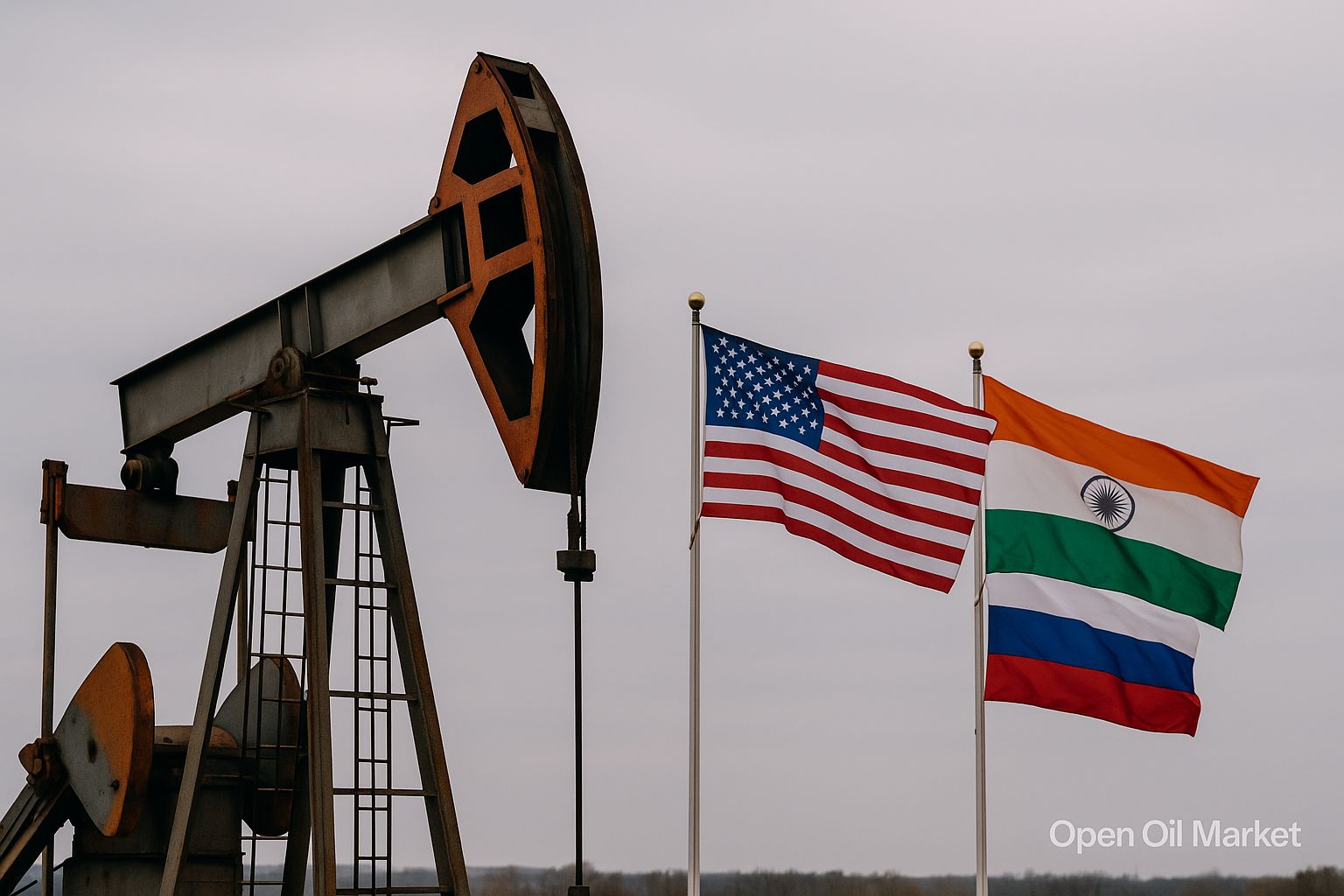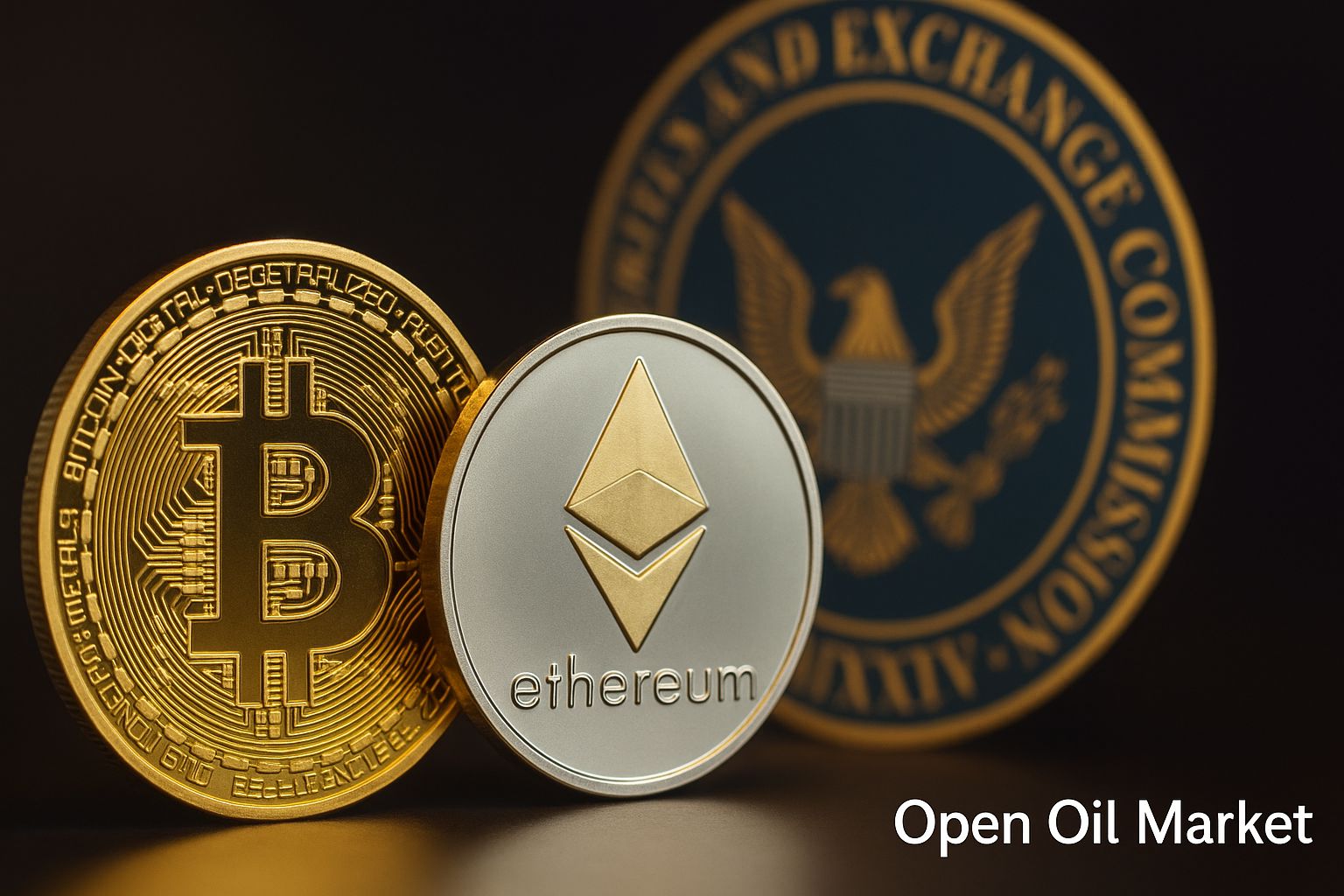
Startup and Venture Capital News - August 4, 2025: AI Boom, Mega Rounds, and Global Expansion
As of early August 2025, the global venture capital market is showing a strong recovery following several years of decline. Investors across the globe are once again actively funding technology companies: deals are being made for record amounts of capital, and startup plans for public offerings are back in the spotlight. The largest funds and corporations have resumed significant venture investments, launching new funds and programs; governments in various countries are increasing support for innovation to keep pace in the global technology race. Preliminary data indicates that the first half of 2025 was the most successful in venture funding since 2021. In North America alone, investments during this period increased by approximately 87% (to ~$116 billion) compared to the previous year, largely due to mega deals in artificial intelligence. Overall, positive trends suggest a return of private capital to the startup market and the formation of a new wave of venture growth.
Venture deals are now encompassing all regions, from Silicon Valley and Europe to Asia, the Middle East, Africa, and Latin America. There is particularly high activity in the U.S. (which accounts for the lion’s share of global investments, a significant portion of which is in the AI sector) and the Middle East (where startup investments in the first half of 2025 reached $2.1 billion, a 134% increase from the previous year). In Europe, a restructuring of the landscape is visible: Germany has first overtaken the UK in venture investments in a decade, indicating a strengthening of continental ecosystems. In Asia, dynamics vary: startup funding in China remains at lower levels, while India, Southeast Asia, and Gulf countries are attracting more capital. Even local markets (for instance, the CIS countries) are striving to catch the new wave of growth despite external constraints. The overall picture points to a global revival of venture capital, although investors remain selective and cautious when approaching deals.
Below are key events and trends shaping the current agenda of the venture market as of August 4, 2025:
- Ongoing IPO Market Revival. Successful public offerings by tech “unicorns” and new applications confirm that the long-awaited “window” for exits remains open.
- Record Funding Rounds and New Unicorns. Unprecedented investment volumes are raising startup valuations to record levels, especially in the artificial intelligence sector.
- Return of Major Investors and Mega Funds. Leading players are forming record venture funds and ramping up investments, re-injecting capital into the market and increasing risk appetite.
- Industry Diversification of Investments. Capital is directed not only to AI but also to fintech, climate projects, biotechnology, defense developments, and even crypto startups, broadening market horizons.
- Consolidation and M&A Transactions. A wave of major mergers, acquisitions, and strategic investments is reshaping the industry landscape, creating new opportunities for exits and company consolidation.
- Global Expansion of Venture Capital. The investment boom is reaching new markets—from the Gulf countries and South Asia to Africa and Latin America—nurturing their own tech ecosystems.
- Local Focus (Russia and CIS). Despite challenges, new funds and initiatives are emerging to bolster local startup ecosystems, attracting investor attention to the region.
IPO Wave Gaining Momentum: The Window for Public Offerings Remains Open
The global market for initial public offerings (IPOs) is confidently reviving after a prolonged lull and continues to gain momentum. In Asia, the new wave of IPOs was initiated by Hong Kong: in recent weeks, several large tech companies have successfully gone public, collectively raising multibillion-dollar amounts. For instance, the Chinese battery manufacturer CATL raised approximately $5.2 billion in its IPO, while pharmaceutical giant Hengrui and food conglomerate Haitian each raised about $1.3 billion. These notable debuts demonstrate that regional investors are once again willing to actively invest in public offerings. Other heavyweights, such as chip developer Montage Technology, are also planning listings on the Hong Kong stock exchange, aiming to raise up to $1 billion, indicating a revival of IPO activity at least in the Asian markets.
In the U.S. and Europe, the situation is also significantly improving. The American fintech unicorn Chime recently successfully debuted on the stock market, surging more than 30% on its first trading day and becoming one of the largest fintech IPOs of the year. This success is inspiring others. The designer platform Figma officially conducted its listing and raised about $1.5 billion during its IPO (with Figma’s revenue for 2024 amounting to $749 million) at a valuation of approximately $15–20 billion. Figma's stock began trading with an increase, confirming high investor demand for tech offerings. Several prominent startups (including payment service Stripe, social platform Reddit, and Indian e-commerce project Meesho) have already submitted applications or are preparing for IPOs in the second half of 2025—indicating that the “window” for public offerings remains open.
The continuation of the active IPO wave is vital for the entire venture ecosystem. Successful public market exits finally provide venture funds the opportunity to lock in profits and redirect capital into new projects. Despite persistent investor caution, the fact that the “window” for IPOs has been open for an extended period encourages more startups to prepare for public listings.
Mega Rounds and New Unicorns: Investments Hit Records
The artificial intelligence sector remains the primary driver of the venture boom in 2025, setting new records in funding volume. Investors worldwide are eager to fund AI leaders, directing colossal sums into the most promising projects. New mega rounds are announced almost weekly, underscoring AI's status as the main “magnet” for venture capital. For instance, the startup Thinking Machines Lab (founded by former OpenAI CTO Mira Murati) raised around $2 billion at an early stage with a valuation of about $12 billion—reflecting an unprecedented market appetite for this young project. Elon Musk's xAI announced the closure of a record funding round: around $5 billion was raised in equity and another $5 billion in debt instruments, equipping the startup with vast resources for developing its AI platform and data center infrastructure. Insider estimates suggest that xAI's valuation now exceeds $100 billion, placing the company among the world's most valuable private firms. Another ambitious player—startup Safe Superintelligence (co-founded by Ilya Sutskover)—secured about $2 billion at a valuation of over $30 billion for developing “safe” AI systems. Moreover, industry reports indicate that company Anthropic is in final negotiations for a new round of funding between $3–5 billion, which could lift its valuation to an astronomical ~$170 billion.
Such mega-deals are generating a new wave of unicorns and even “decacorns” (valuations exceeding $10 billion), particularly in the AI space. Analysts estimate that in the second quarter of 2025, up to 45% of all global venture funding was directed toward AI projects. Moreover, investors are drawn to not only developers of foundational AI models and platforms but also niche solutions—from medical data analysis and financial analytics to management business systems. The all-encompassing “hype around AI” continues to dominate venture market agendas, ensuring an unprecedented influx of capital, although some experts warn of risks of overheating in the sector.
At the same time, investors are actively funding other rapidly growing segments, leading to the emergence of new unicorns beyond AI. Recent examples of major deals from the past few days include:
- The Israeli startup Cato Networks (cloud cybersecurity) raised $359 million (valuation ~ $4.8 billion).
- The fintech startup Ramp (USA, corporate expense management service) secured $500 million (valuation increased to approximately $22.5 billion).
- The platform Juniper Square (USA, investment management software for private markets) raised $130 million (valuation ~ $1.1 billion).
- The content creator service Substack (USA) secured $100 million (valuation ~ $1.1 billion).
Collectively, these and other recent deals have sharply increased the valuations of numerous companies. In just the first half of 2025, several dozen new unicorns emerged, with some quickly reaching the status of “ultra-unicorns” (valuations exceeding $5 billion). Record capital infusions into AI, fintech, biotech, and other innovative niches confirm a return of investor confidence in promising technologies.
Return of Mega Funds: Major Investors Refill the Market with Capital
The largest investment players are making a triumphant return to the venture scene, signaling a renewed appetite for risk. The Japanese conglomerate SoftBank, after a period of quiet, is again making a big bet on large investments: Masayoshi Son announced the formation of the Vision Fund III, approximately worth $40–50 billion, focused on cutting-edge technologies with an emphasis on AI and robotics. Sovereign funds from Gulf countries are also becoming active—they are pouring billions of dollars into tech projects and launching state mega-programs to develop the startup sector, creating their own tech hubs in the Middle East. Simultaneously, new venture funds are being established worldwide—both independent and corporate—attracting significant institutional capital for investment in high-tech industries.
Notably, well-known Silicon Valley firms are also increasing their presence. For example, the venture giant Andreessen Horowitz (a16z) is raising a record new fund of around $20 billion, primarily aimed at investing in late-stage American AI startups. According to industry research, U.S. funds currently hold unprecedented reserves of “dry powder” (over $300 billion in unallocated capital) ready to invest as market confidence returns. Such flows of “big money” provide the ecosystem with liquidity, fueling new rounds and supporting the growth of promising companies. The return of mega funds and major institutional investors not only intensifies the competition for the best deals but also instills confidence in the industry for continued capital influx.
Investment Diversification: Fintech, Climate, Biotech (and Even Crypto) on the Rise
In 2025, venture investments are being distributed across an increasingly broad range of industries, moving beyond artificial intelligence alone. After last year's slowdown, there is a noticeable revival in fintech: major rounds are occurring not only in the U.S. but also in Europe, Asia, and emerging markets. A significant revival of major deals in financial technologies is highlighted by the recent $820 million raised by New York-based platform iCapital through a consortium of investors, at a valuation exceeding $7.5 billion—signaling renewed interest in the sector.
Concurrently, there is a boom in “green” technologies: funds are eagerly financing climate projects—from renewable energy and electric transportation to innovative nuclear solutions. For instance, the Swiss startup Climeworks secured $162 million to expand its direct carbon capture systems, bringing total raised funds to more than $1 billion. In the field of nuclear fusion, European companies set a new record for funding (around €290 million in the first half of 2025), while American projects lead in mega rounds (for example, Commonwealth Fusion Systems raised around $1 billion).
Biotechnology and medtech startups are also accumulating significant capital from venture funds. For instance, the American startup Centivax secured $45 million for developing a universal flu vaccine. The cybersecurity segment remains one of the market’s drivers (consider the significant deal with Cato Networks mentioned above). Crypto and Web3 startups are beginning to revive after a deep downturn—venture investments in blockchain projects exceeded $10 billion in the second quarter of 2025 (the highest since 2022), indicating a gradual return of interest in this direction. Thus, the venture market demonstrates increased maturity: capital is now being distributed across a wide array of sectors—from finance and energy to agrotech and defense. Investors are diversifying their portfolios, making the innovative ecosystem more resilient to overheating in specific industries.
Consolidation and M&A: Consolidation of Players
High valuations of companies and fierce competition for markets are pushing the startup ecosystem towards consolidation. Major mergers and acquisitions are back in the spotlight, changing the balance of power in the industry. In Southeast Asia, discussions are underway regarding a potential mega-deal: the taxi and delivery market leader Grab has resumed talks to merge with Indonesian tech holding GoTo. The merger of two companies with a combined valuation of approximately $25 billion would create a dominant platform in the region. The mere fact of returning to dialogue between Grab and GoTo reflects players' desire to optimize costs and strengthen positions through collaboration.
In the U.S. and Europe, tech giants are also ramping up acquisition efforts for promising projects. Google recently completed a record acquisition of cloud cybersecurity startup Wiz for $32 billion—this is the largest tech deal of the year, considerably strengthening Google’s position in the cloud services market. Concurrently, Meta invested around $14 billion in startup Scale AI (data labeling platform), acquiring ~49% of the shares at a valuation of about $28 billion. This strategic deal highlights the desire of major IT players to secure key AI competencies. Additionally, amid rising demand for AI infrastructure, the American cloud provider CoreWeave announced the acquisition of data mining company Core Scientific for $9 billion, aiming to repurpose its data centers (originally built for cryptocurrency mining) for artificial intelligence needs.
Interest in defense and aerospace technologies is also leading to record deals. Europe is witnessing unprecedented growth in this segment: the German startup Helsing raised about €600 million in an investment round led by the Prima Materia fund (the investment company co-founded by Spotify's Daniel Ek), elevating Helsing’s valuation to ~€12 billion. As a result, Helsing has entered the ranks of the five highest-valued young companies in the defense sector, confirming the trend towards strengthening the private military-technology domain. Overall, current activity in M&A and major venture deals reflects the industry's reshaping and maturation. Mature startups are either merging with each other or becoming targets for acquisition by corporations, while venture funds are finally receiving much-anticipated opportunities for profitable exits from their investments.
Global Expansion of Venture Capital: New Markets and Regions
The 2025 venture boom is acquiring genuinely global dimensions, encompassing markets that were recently on the periphery of the tech scene. The Middle Eastern countries are demonstrating record levels of activity: supported by government initiatives, large funds and hubs for startup development are being created, and more regional projects are receiving funding. In Gulf states, mega-projects aimed at economic diversification through technology are being launched, with local venture funds serving as leading investors in both domestic and international markets.
New unicorns are emerging in Southeast Asia: tech companies in e-commerce, fintech, and logistics are achieving valuations exceeding $1 billion against the backdrop of rapid growth in the digital economy and expanding user bases. India and Indonesia are also witnessing a surge in venture activity: in recent weeks, several Indian and Indonesian startups have closed funding rounds worth tens and hundreds of millions of dollars, while several successfully developing companies have announced plans for IPOs. Such geographical expansion of venture capital intensifies competition for the best projects: today, funds and business angels are tracking promising teams from Singapore and Dubai to Nairobi and São Paulo.
Africa is also experiencing an unprecedented influx of investment, leading to the rapid development of local startup ecosystems. From Nigerian fintech projects to Kenyan agrotech startups—an increasing number of African teams are attracting international capital for scaling. Latin America is keeping pace: in 2025, Mexico surpassed Brazil for the first time in venture investment volumes, with regional startups actively securing funding in sectors such as fintech, e-commerce, and logistics. The emergence of new innovation centers in Mexico City, São Paulo, Dubai, Jakarta, and other cities intensifies global competition for capital and talent.
Russia and CIS: Local Focus Amid Global Trends
Despite external constraints, active steps are being taken in Russia and neighboring countries to develop their own startup ecosystems, keeping an eye on global trends. At the St. Petersburg International Economic Forum (SPIEF 2025), a new venture fund from PSB bank was announced in collaboration with partners—targeting around 12 billion rubles, with funds directed towards supporting dual-use projects (drones, AI, robotics, and other high-tech fields). Besides government institutions, private players are also becoming active: for instance, venture firm Kama Flow launched a new fund of 10 billion rubles for investments in mature startups. Even in the face of sanctions, the market is seeking opportunities to finance priority technologies and striving to nurture its own successful unicorns.
At the same time, some regional startups are moving to the next level. For example, the Krasnodar food tech project Qummy raised 440 million rubles at a valuation of ~2.4 billion rubles as it prepares for an IPO—this case demonstrates the seriousness of even local initiatives. Additionally, in Kazakhstan, a state fund named Qazaqstan Venture Group was established with a volume of $1 billion to support AI startups. In July 2025, Russia also relaxed regulations for foreign investors: they were allowed to acquire stakes in domestic companies and smoothly repatriate funds. These steps are aimed at stimulating international investments and more closely integrating the local venture capital market into global processes.
While the scale of the venture market in the region may still be relatively modest, the foundation for future growth is gradually being laid. Investors are shifting their focus to more mature projects with proven business models, while the government is expanding support through the development of IT education, accelerators, and special tax regimes. Local startups are striving to integrate into global value chains, leveraging their strengths in cutting-edge technological fields (AI, Big Data, etc.).
Conclusions: Cautious Optimism and Quality Growth
As of early August 2025, sentiments in the venture industry remain cautiously optimistic. Successful IPOs and large funding rounds provide grounds to believe that the bottom of the downturn has been crossed; however, investors continue to approach deals selectively, favoring companies with sustainable business models and clear paths to profitability. Significant capital inflows into AI, fintech, and cybersecurity instill confidence in further industry growth, but funds are paying increased attention to diversification and risk management. If the current momentum is maintained, the second half of 2025 might see further growth in the number of deals, but the primary focus will remain on the quality of this growth and the long-term sustainability of startups.




